Batavia (Dutch pronunciation: [baːˈtaːviaː] (listen)) was a ship of the Dutch East India Company (VOC). It was built in Amsterdam, Dutch Republic, in 1628, and armed with 24 cast-iron cannons and a number of bronze guns. Batavia was shipwrecked on her maiden voyage, and was made famous by the subsequent mutiny and massacre that took place among the survivors. A twentieth-century replica of the ship is also called the Batavia and can be visited in Lelystad, Netherlands.
- lelystad
- batavia
- voc
1. Mutiny on the Batavia
1.1. Departure and Voyage
On 27 October 1628, the newly built Batavia, commissioned by the Dutch East India Company, sailed from Texel[1] for the Dutch East Indies, to obtain spices. It sailed under commandeur and opperkoopman (upper- or senior merchant) Francisco Pelsaert, with Ariaen Jacobsz serving as skipper. These two had previously encountered each other in Surat, India. Some animosity had developed between them in Surat after Jacobsz became drunk and insulted Pelsaert in front of other merchants, leading to a public dressing-down for Jacobsz by Pelsaert.[2] Also on board was the onderkoopman (under- or junior merchant) Jeronimus Cornelisz, a bankrupt pharmacist (a.k.a. heretic apothecary[3]) from Haarlem who was fleeing the Netherlands, in fear of arrest because of his heretical beliefs associated with the painter Johannes van der Beeck, also known as Torrentius.
During the voyage, Jacobsz and Cornelisz conceived a plan to take the ship, which would allow them to start a new life somewhere, using the huge supply of trade gold and silver then on board.[4] After leaving the Cape of Good Hope, where they had stopped for supplies, Jacobsz deliberately steered the ship off course, away from the rest of the fleet. Jacobsz and Cornelisz had already gathered a small group of men around them and arranged an incident from which the mutiny was to ensue. This involved molesting a high-ranking young female passenger, Lucretia Jans, in order to provoke Pelsaert into disciplining the crew. They hoped to paint his discipline as unfair and recruit more members out of sympathy. However, the woman was able to identify her attackers.[5][6] The mutineers were then forced to wait until Pelsaert made arrests, but he never acted, as he was suffering from an unknown illness.
1.2. Shipwreck
On 4 June 1629, the ship struck Morning Reef near Beacon Island (Coordinates: 28°29′25″S 113°47′36″E / 28.49028°S 113.79333°E / -28.49028; 113.79333), part of the Houtman Abrolhos off the Western Australian coast.[1] Of the 322 aboard, most of the passengers and crew managed to get ashore, although 40 people drowned. The survivors, including all the women and children, were then transferred to nearby islands in the ship's longboat and yawl. An initial survey of the islands found no fresh water and only limited food (sea lions and birds). Pelsaert realised the dire situation and decided to search for water on the mainland.
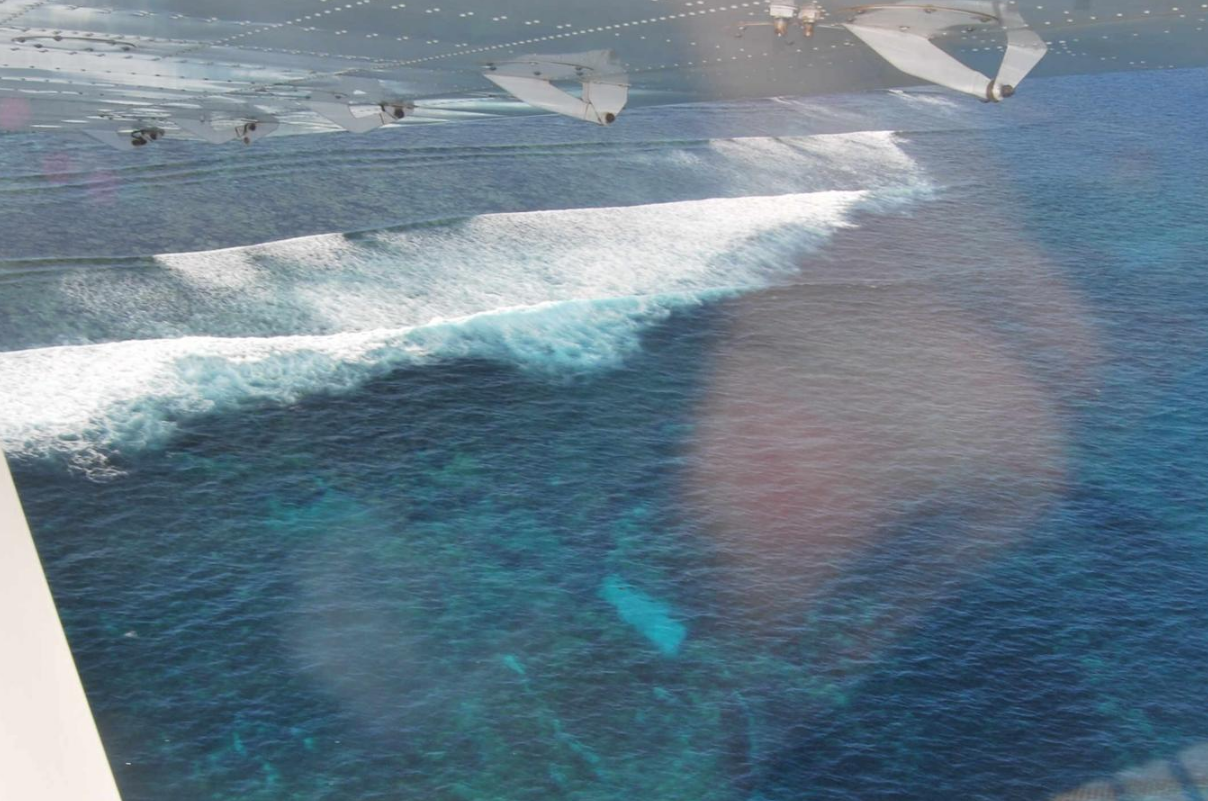
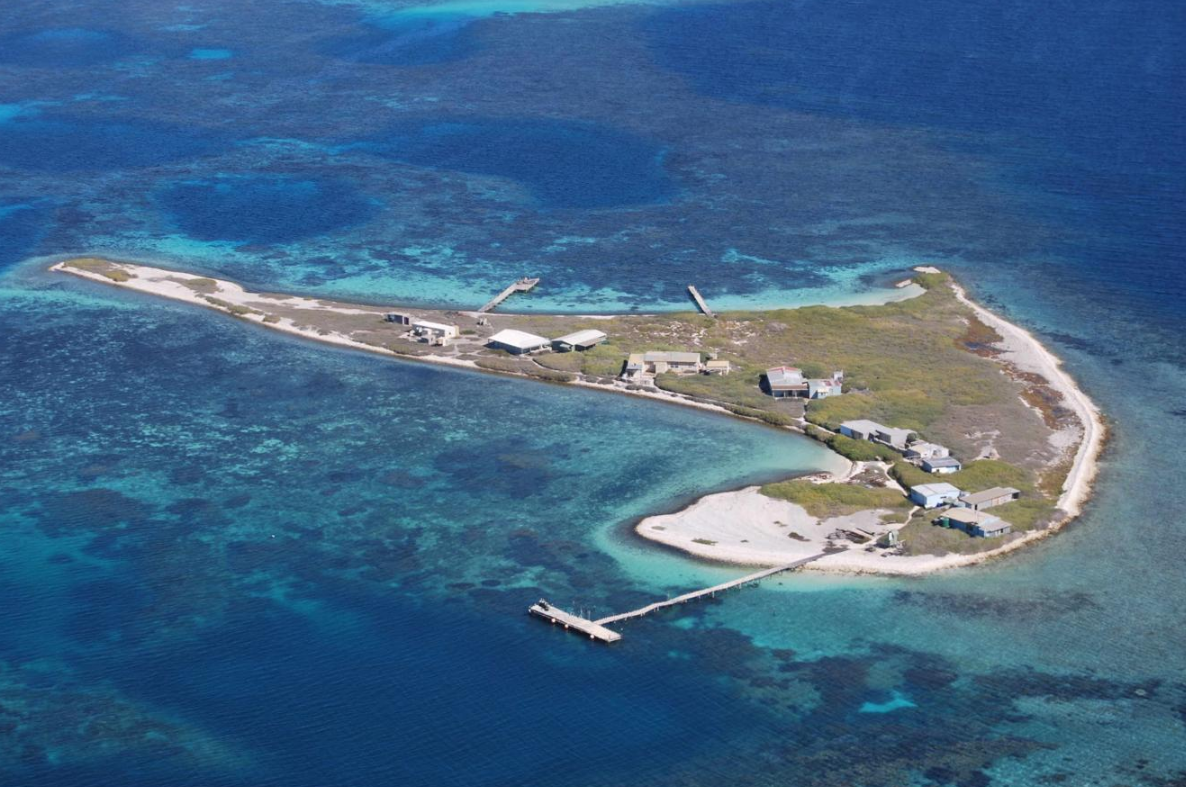
A group comprising Captain Jacobsz, Francisco Pelsaert, senior officers, a few crew members, and some passengers left the wreck site in a 9-metre (30 ft) longboat (a replica of which has also been made), in search of drinking water. After an unsuccessful search for water on the mainland, they abandoned the other survivors and headed north in a danger-fraught voyage to the city of Batavia, now known as Jakarta. En route they made further forays onto the mainland in search of fresh water. In his journal, Pelsaert states that on 15 June 1629, they sailed through a channel between a reef and the coast, finding an opening around midday at a latitude guessed to be about 23 degrees south where they were able to land, and water was found. The group overnighted on land. Pelsaert commented on the vast number of termite mounds in the vicinity and the plague of flies that afflicted them. Drake-Brockman suggested this location is approximately 10 kilometres (6 mi) north of Point Cloates where water has subsequently been located. Pelsaert states that they continued north with the intention of finding the 'river of Jacob Remmessens', identified first in 1622, but owing to the wind were unable to land. Drake-Brockman suggests that this location is to be identified with Yardie Creek.[7]
It was not until the longboat reached the island of Nusa Kambangan in Indonesia that Pelsaert and the others found any more water.[8] The journey took 33 days, with everyone surviving.
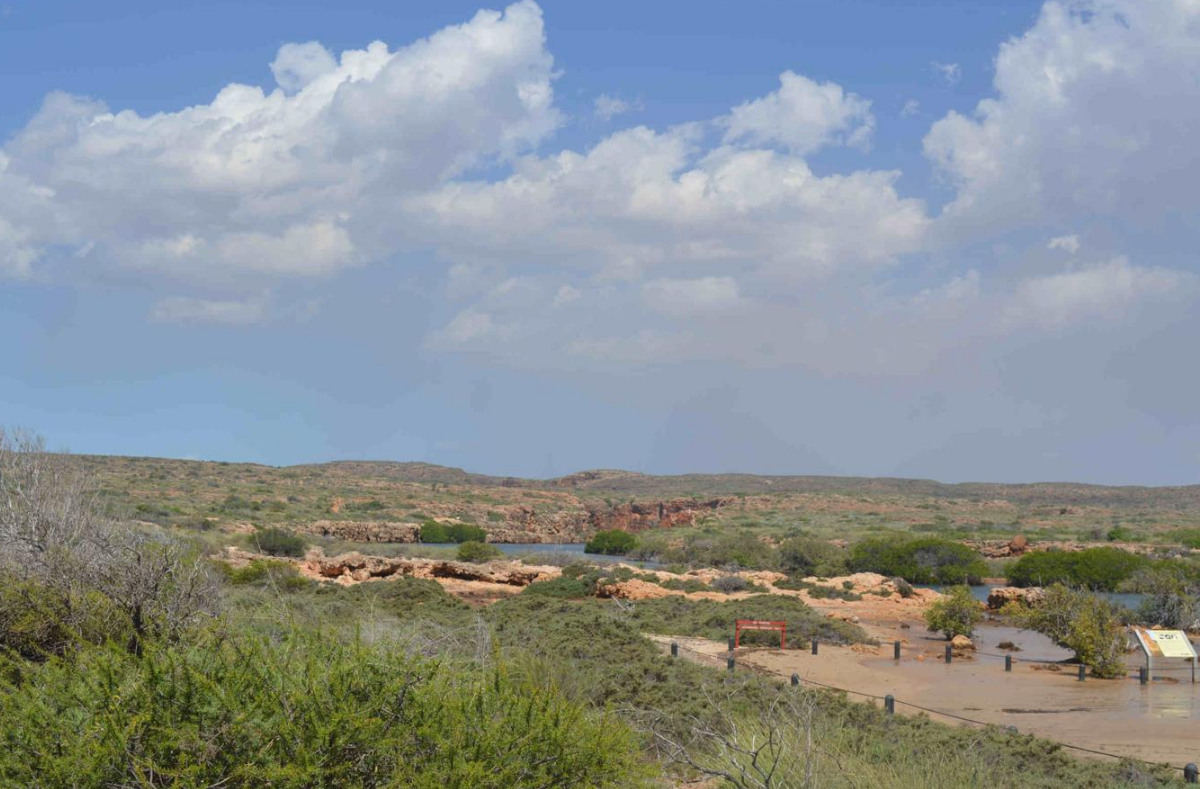
After their arrival in Batavia, the boatswain, a man named Jan Evertsz, was arrested and executed for negligence and "outrageous behaviour" before the loss of the ship (he was suspected to have been involved). Jacobsz was also arrested for negligence, although his position in the potential mutiny was not guessed by Pelsaert.[9]
Batavia's Governor General, Jan Coen, immediately gave Pelsaert command of the Sardam to rescue the other survivors, as well as to attempt to salvage riches from the Batavia's wreck. He arrived at the islands two months after leaving Batavia, only to discover that a bloody mutiny had taken place amongst the survivors, reducing their numbers by at least a hundred.[10]
1.3. Murders
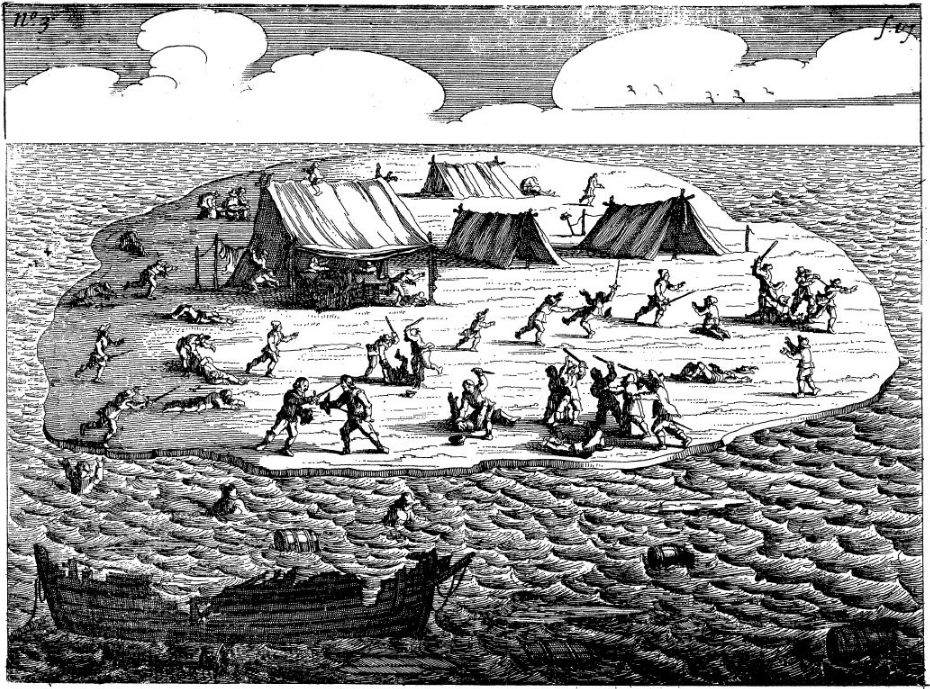
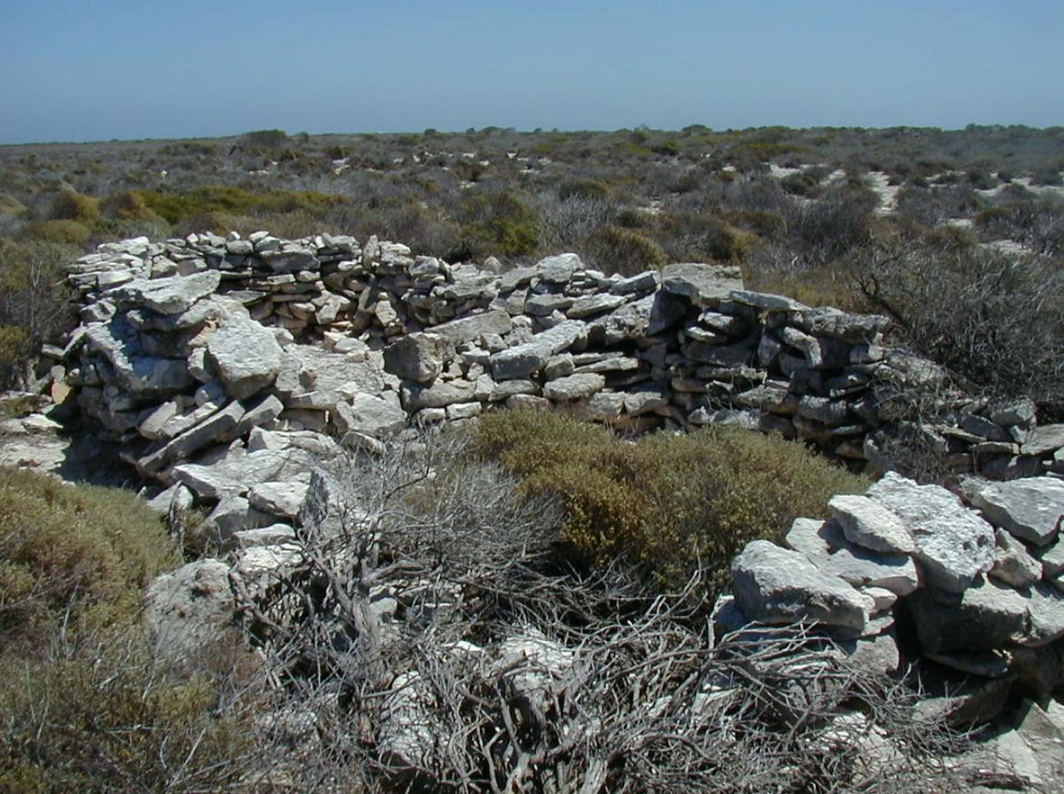

Jeronimus Cornelisz was left in charge of the survivors. He made plans to hijack any rescue ship that might return and use the vessel to seek another safe haven. Cornelisz even made far-fetched plans to start a new kingdom, using the gold and silver from the wrecked Batavia. However, to carry out this plan, he first needed to eliminate possible opponents.[11]
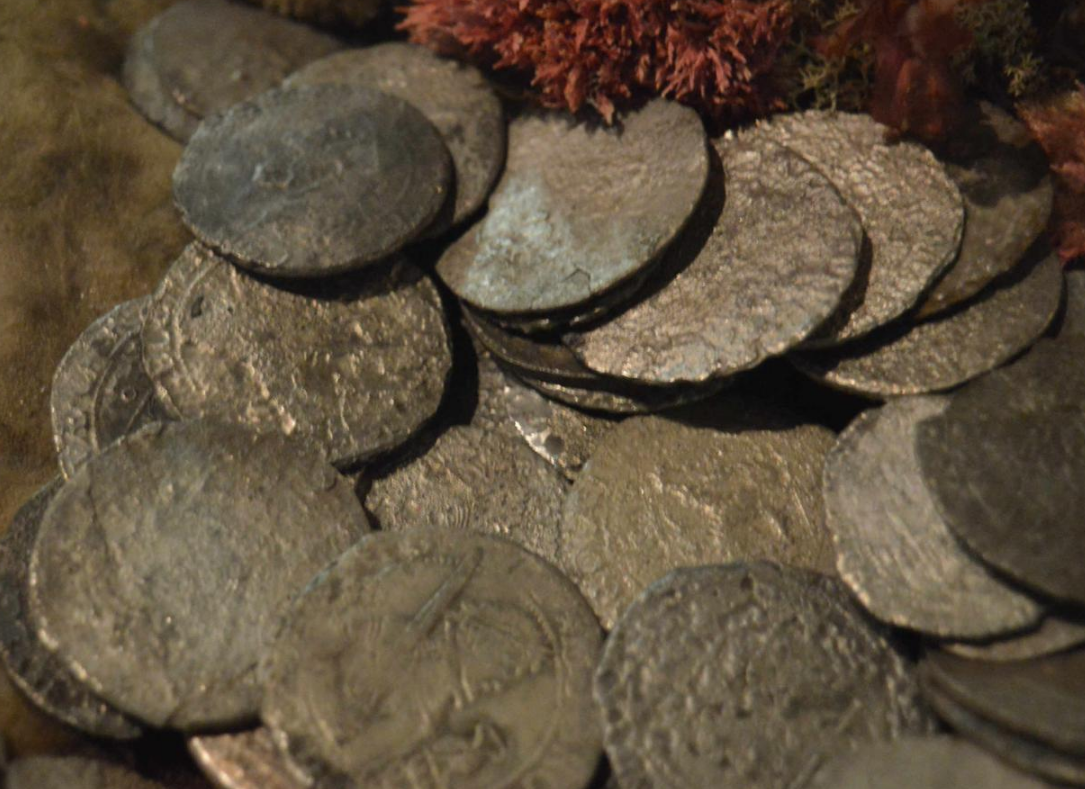
Cornelisz's first deliberate act was to have all weapons and food supplies commandeered and placed under his control. He then moved a group of soldiers, led by Wiebbe Hayes, to nearby West Wallabi Island, under the false pretence of searching for water. They were told to light signal fires when they found water and they would then be rescued.[11] Convinced that they would be unsuccessful, he then left them there to die, taking complete control of the situation.
With a dedicated band of murderous young men, Cornelisz began to systematically kill anyone he believed would be a problem to his reign of terror, or a burden on their limited resources. The mutineers became intoxicated with killing, and no one could stop them. They needed only the smallest of excuses to drown, bash, strangle or stab to death any of their victims, including women and children.[11]
Cornelisz never committed any of the murders himself, although he tried and failed to poison a baby (who was eventually strangled).[12] Instead, he coerced others into doing it for him, usually under the pretence that the victim had committed a crime such as theft. Cornelisz, it has been suggested, sought "novelty and stimulation" after having ordered numerous murders by ordering more "perverse atrocities". The mutineers had originally murdered to save themselves but eventually they began to kill for pleasure or out of habit.[13] Cornelisz planned to reduce the island's population to around 45 so that their supplies would last as long as possible. He also feared that many of the survivors remained loyal to the VOC.[14] In total, his followers murdered at least 110 men, women, and children.
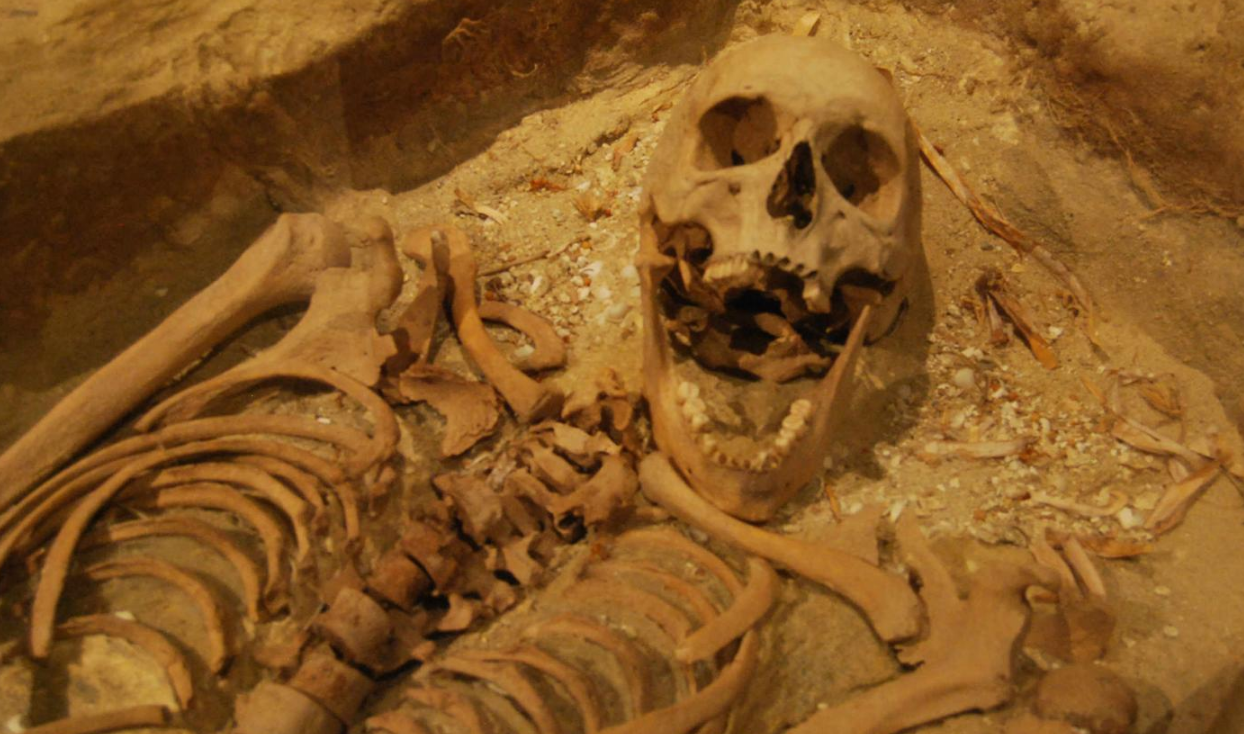

1.4. Rescue
Although Cornelisz had left the soldiers, led by Wiebbe Hayes, to die, they had in fact found good sources of water and food on their islands. Initially, they were unaware of the barbarity taking place on the other islands and sent pre-arranged smoke signals announcing their finds. However, they soon learned of the massacres from survivors fleeing Cornelisz' island. In response, the soldiers devised makeshift weapons from materials washed up from the wreck. They also set a watch so that they were ready for the mutineers, and built a small fort out of limestone and coral blocks.[15]
Cornelisz seized on the news of water on the other island, as his own supply was dwindling and the continued survival of the soldiers threatened his own success. He went with his men to try to defeat the soldiers marooned on West Wallabi Island. However, the trained soldiers were by now much better fed than the mutineers and easily defeated them in several battles, eventually taking Cornelisz hostage. The mutineers who escaped regrouped under a man named Wouter Loos and tried again, this time employing muskets to besiege Hayes' fort and almost defeating the soldiers.[16]
But Wiebbe Hayes' men prevailed again, just as Pelsaert arrived. A race to the rescue ship ensued between Cornelisz's men and the soldiers. Wiebbe Hayes reached the ship first and was able to present his side of the story to Pelsaert. After a short battle, the combined force captured all of the mutineers.[17]
1.5. Aftermath
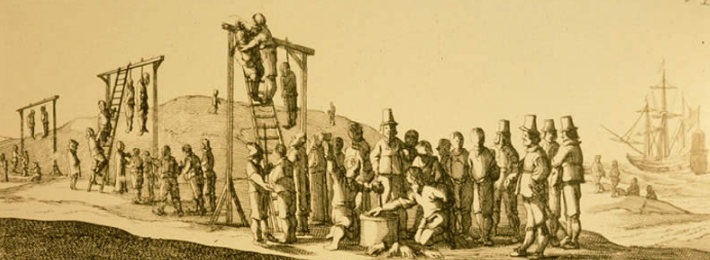
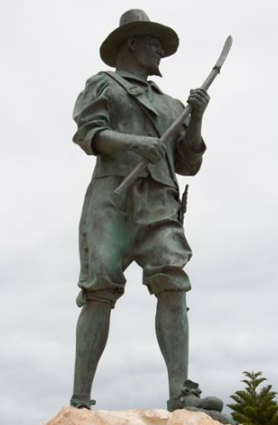
Pelsaert decided to conduct a trial on the islands, because the Sardam on the return voyage to Batavia would have been overcrowded with survivors and prisoners. After a brief trial, the worst offenders were taken to Seal Island and executed. Cornelisz and several of the major mutineers had both hands chopped off before being hanged.[18] Wouter Loos and a cabin boy, Jan Pelgrom de By, considered only minor offenders, were marooned on mainland Australia, never to be heard of again. This location is now thought to be Whitecarra Creek near Kalbarri, though another suggestion is that nearby Port Gregory was the place.[8] Reports of unusually light-skinned Aborigines in the area by later British settlers have been suggested as evidence that the two men might have been adopted into a local Aboriginal clan. Some amongst the Amangu people of the mainland have a blood group specific to Leyden, in Holland.[19] However, numerous other European shipwreck survivors, such as those from the wreck of the Zuytdorp in the same region in 1712, may also have had such contact with indigenous inhabitants, making it now impossible to determine whether the Batavia crew members were responsible.
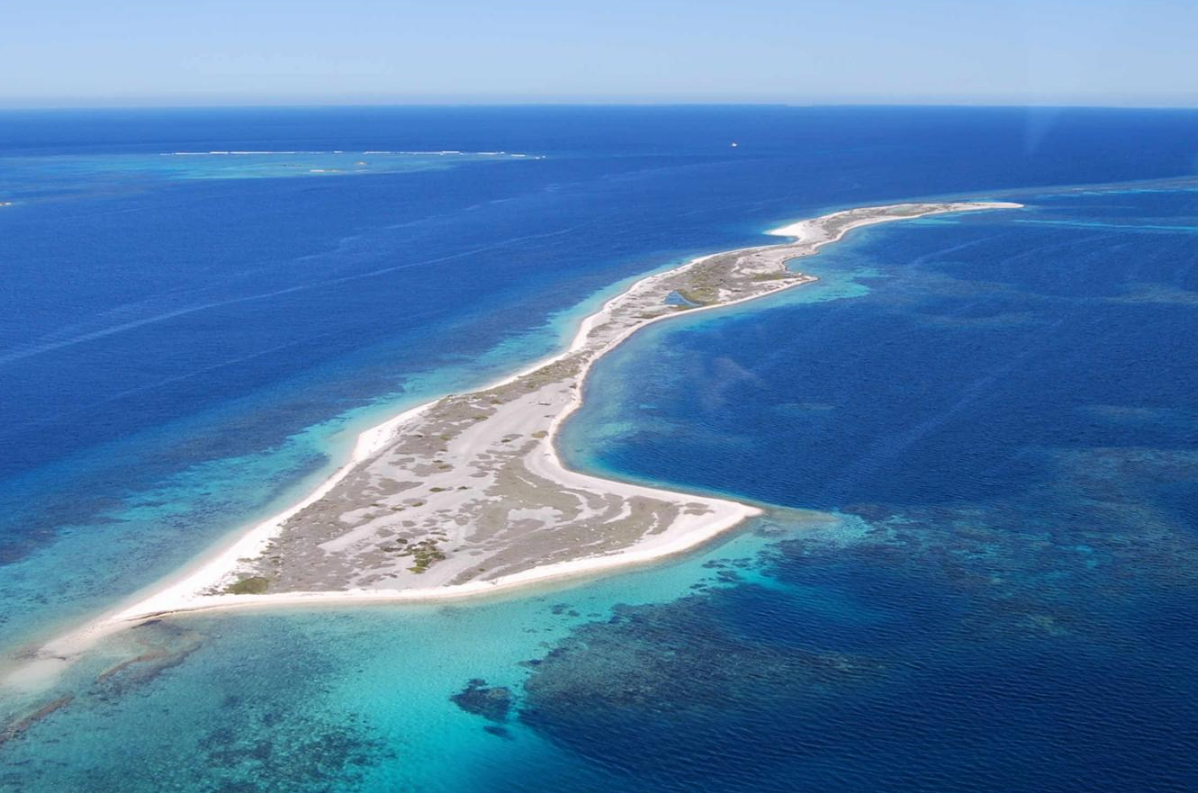
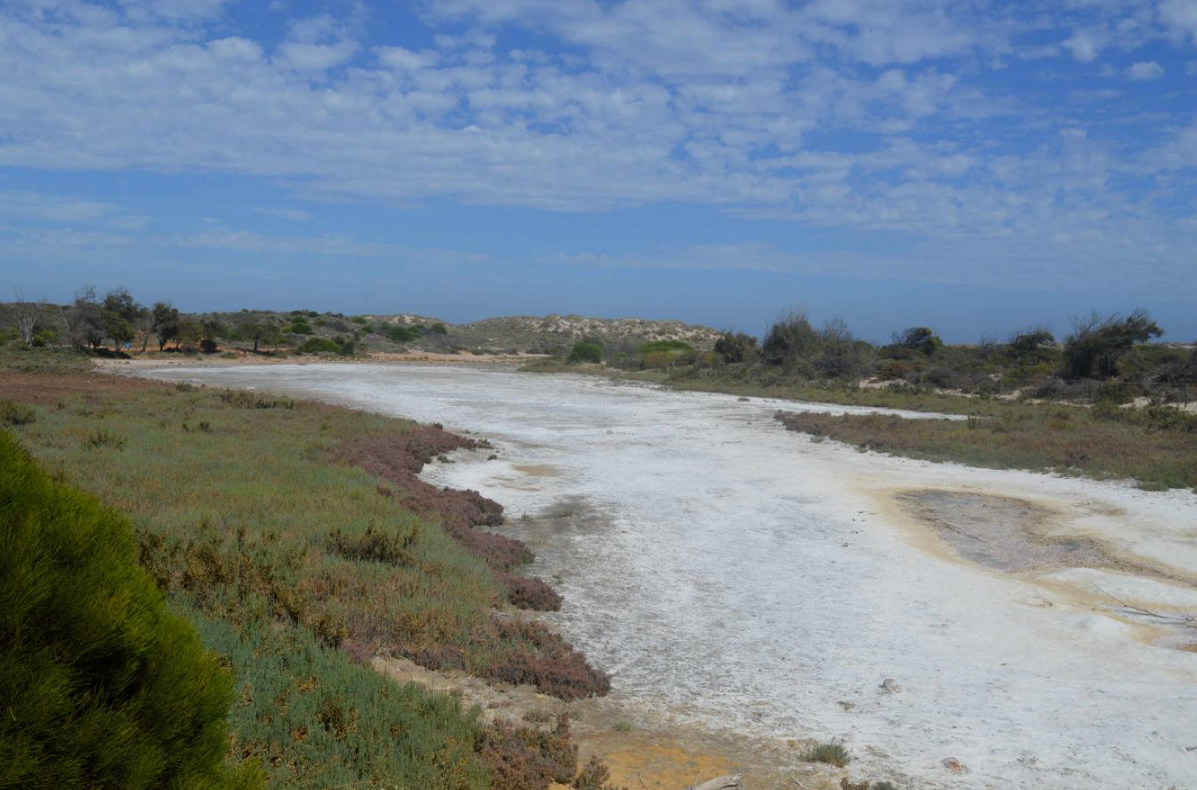
The remaining mutineers were taken to Batavia for trial. Five were hanged, while several others were flogged. Cornelisz's second in command, Jacop Pietersz, was broken on the wheel, the most severe punishment available at the time.
Captain Jacobsz, despite being tortured, did not confess to his part in planning the mutiny and escaped execution due to lack of evidence. What finally became of him is unknown. It is suspected that he died in prison in Batavia.
A board of inquiry decided that Pelsaert had exercised a lack of authority and was therefore partly responsible for what had happened. His financial assets were seized, and he died within a year.
On the other hand, the common soldier Wiebbe Hayes was hailed as a hero. The Dutch East India Company promoted him to sergeant, and later to lieutenant, which increased his salary fivefold.
Of the original 341 people on board the Batavia, only 68 made it to the port of Batavia.
2. Wreckage, Discovery and Recovery
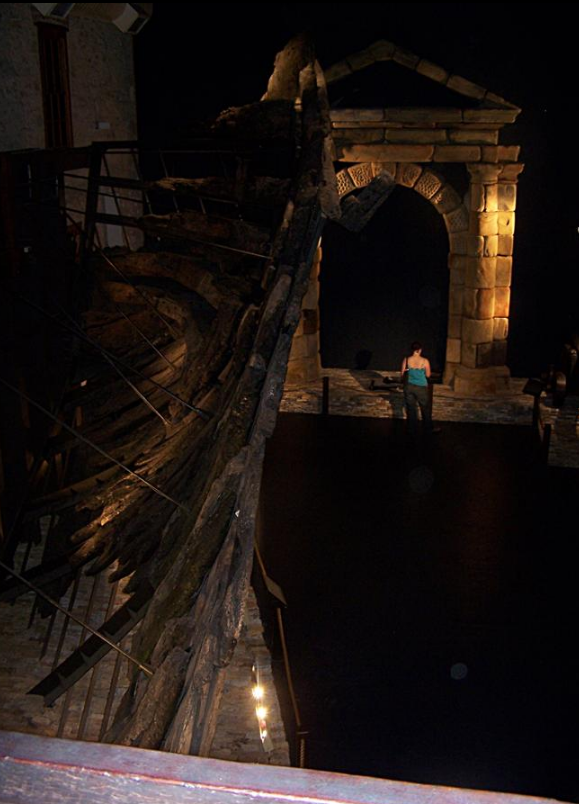
During Admiralty surveys of the Abrolhos Islands on the north-west coast in April 1840, Captain Stokes of HMS Beagle reported that:
On the south west point of an island the beams of a large vessel were discovered, and as the crew of the Zeewijk, lost in 1728, reported having seen a wreck of a ship on this part, there is little doubt that the remains were those of the Batavia, Commodore Pelsaert, lost in 1629. We in consequence named our temporary anchorage Batavia Road, and the whole group Pelsaert Group.[18]
However, Stokes appears to have confused the wreck of the Zeewijk for that of the Batavia.[20] In the 1950s, historian Henrietta Drake-Brockman, who had learnt of the story due to her association with the children of the Abrolhos Islands guano merchant F. C. Broadhurst, son of Charles Edward Broadhurst, argued from extensive archival research and translations by E. D. Drok, that the wreck must lie in the Wallabi Group of islands. Surveyor Bruce Melrose and diving journalist Hugh Edwards agreed with the theory. In association with Drake-Brockman, Edwards organised a number of search expeditions near Beacon Island in the early 1960s and narrowly missed locating the site. After Edwards provided his research to them, and after being led to the place by Abrolhos rock lobster-fisherman Dave Johnson (who had seen an anchor from his boat while setting lobster pots), on 4 June 1963 Max and Graham Cramer with Greg Allen became the first to dive on the site. Its location, together with those of the VOC ship Vergulde Draeck (Gilt Dragon) and the English East India Company Tryall (Tryal), in the early 1960s, led to the formation of the Departments of Maritime Archaeology and Materials Conservation and Restoration at the Western Australian Museum.
In the period 1970 through to 1974, under the leadership of maritime archaeologist Jeremy Green of the Western Australian Museum, some of the cannon from the Batavia wreck, an anchor, and many artifacts were salvaged, including timbers from the port side of the ship's stern. These were then conserved by the Museum's conservation laboratories under the leadership of Colin Pearson and his successors Neil North and Ian MacLeod.[21] Monitoring and treatment of the timbers is ongoing and is under the leadership of Ian Godfrey and Vicki Richards.[22]
In order to facilitate the monitoring and any future treatment, the hull timbers were erected on a steel frame designed and erected by Geoff Kimpton, a member of Green's staff. The design, and that of a stone arch, or portico, which was also raised from the seabed, is such that individual components can be removed for treatment without affecting those adjacent, or the exhibit as a whole.[23]
In 1972, the Netherlands transferred all rights to Dutch shipwrecks on the Australian coasts to Australia. Some of the items, including human remains, which were excavated, are now on display in the Western Australian Museum – Shipwreck Galleries in Fremantle, Australia. Others are held by the Western Australian Museum, Geraldton. These two museums presently share the remains: a replica stone arch is held in The Western Australian Museum – Shipwreck Galleries, which was intended to serve as a stone welcome arch for the city of Batavia and the actual stone arch is held in the Western Australian Museum, Geraldton; the original timbers from the ship's hull are held at the Western Australian Museum – Shipwreck Galleries. While a great deal of materials have been recovered from the wreck-site, the majority of the cannons and anchors have been left in situ. As a result, the wreck remains one of the premier dive sites on the West Australian coast and is part of the museum's wreck trail, or underwater "museum-without-walls" concept.[24]
3. Treasure
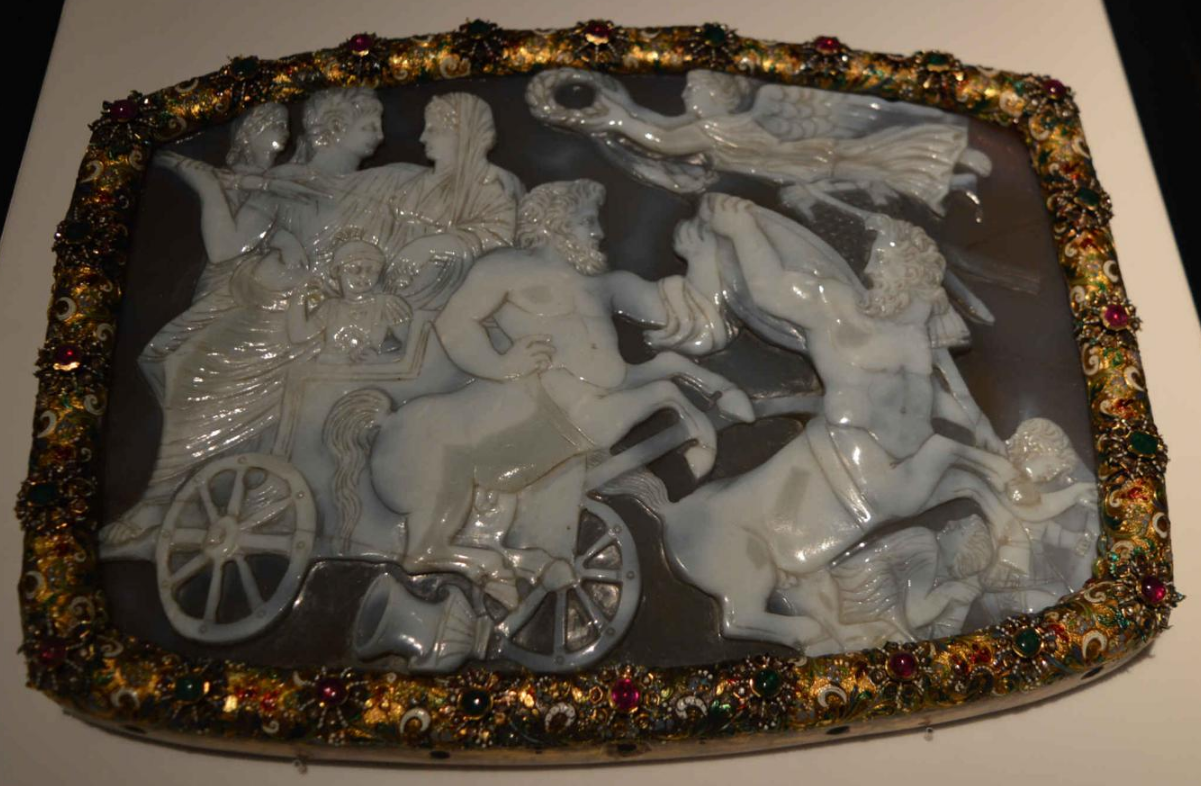
The Batavia carried a considerable amount of treasure. Each ship in the Batavia class carried an estimated 250,000 guilders each in twelve wooden chests containing about 8000 silver coins each.[25] This money was intended for the purchase of spice and other commodities in Java. The bulk of these coins were silver rijksdaalder issues produced by the individual Dutch states, with the remainder being mostly made up of similar coins produced by German cities such as Hamburg. Each of these silver coins was equal to 2.5 guilders, hence approximately 12 x 8000 = 96000 coins. Displays of the largely heavily corroded coins are on show at the Fremantle Western Australia Shipwrecks Museum, and at the Museum of Geraldton (Western Australia Museum), along with other artifacts from the wreck. These coins are derived from the two chests Pelsaert failed to salvage. Coins continue to be recovered by divers.
Pelsaert was instructed to recover as much of the money as possible on his return to the Abrolhos Islands, using divers ‘to try if it is possible to salvage all the money’ [and] ‘the casket of jewels that before your departure was already saved on the small island’ (for the jewels see below).[26] Recovery of the money was far from easy. Pelsaert reported difficulties in pulling up heavy chests (e.g., 27 October 1629 when a chest had to be marked with a buoy for later recovery). On 9 November he recorded sending four money chests to the Sardam, and three the next day but then abandoned further recover work. By 13 November, Pelsaert recorded that ten money chests had been recovered (about 80,000 coins), leaving two lost since there had been twelve loaded originally. One was jammed under a cannon, and one had been broken open by the mutineers.[27]
The Batavia’s treasure also included special items being carried by Pelsaert for sale to the Mogul Court in India where he had intended to travel on to. There were four jewel bags, stated to be worth about 60,000 guilders, and an early-fourth-century Roman cameo, as well as numerous other items either now displayed in Fremantle and Geraldton, or recovered by Pelsaert. The Gemma Constantina Batavia cameo depicts the emperor Constantine I and is considered probably to have been made at his court to commemorate the Battle of the Milvian Bridge in 312.[28] The cameo was in 1628, the property of an Amsterdam jeweler called Gaspar Boudaen, on whose behalf Pelsaert was carrying it. Boudaen had added a gold frame with jewels.[29]
The cameo was removed from the wreck to Beacon Island where it formed part of Cornelisz’s loot. It was recovered by Pelsaert after the mutiny was over. It was not sold in India and returned to Holland in 1656.[30] The cameo was at the Royal Penningkabinet at Leiden in Holland from 1823 until 2004, but is now at the Dutch National Museum of Antiquities (Rijksmuseum van Oudheden). In 2017 it returned to Western Australia for the first time since 1629, and was displayed in Fremantle at the Western Australia Maritime Museum until the 23rd of April, 2017.[31][32]
4. Replica
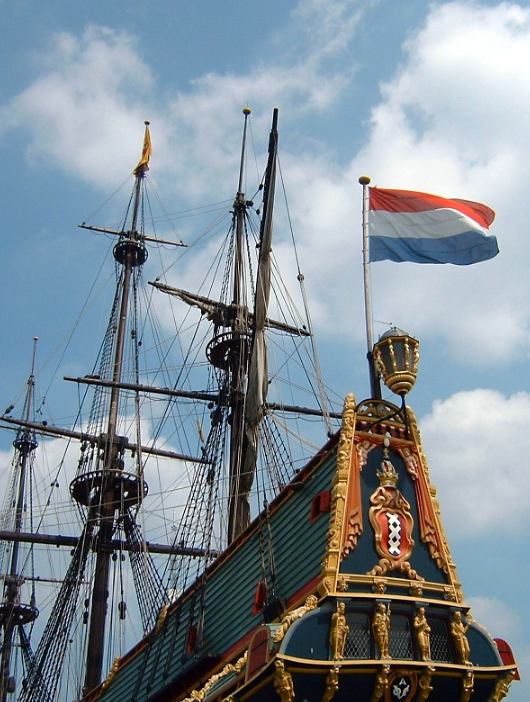
A replica of the Batavia was built at the Bataviawerf (Batavia shipyard) in Lelystad in the Netherlands. The project lasted from 1985 to 7 April 1995, and was conducted as an employment project for young people under master-shipbuilder Willem Vos.[33] The shipyard is currently reconstructing another 17th-century ship. In contrast to the merchant ship Batavia, Michiel de Ruyters' flagship, the Zeven Provinciën, is a ship of the line. As of 2017 this project remains ongoing.[34]
The Batavia replica was built with traditional materials, such as oak and hemp, and using the tools and methods of the time of the original ship's construction. For the design, good use was made of the remains of the original ship in Fremantle (and of the Vasa in Stockholm), as well as historical sources, such as 17th century building descriptions (actual building plans weren't made at the time), and prints and paintings by artists (who, at the time, generally painted fairly true to nature), of similar ships.
On 25 September 1999, the new Batavia was transported to Australia by barge, and moored at the National Maritime Museum in Sydney. In 2000, Batavia was the flagship for the Dutch Olympic Team during the 2000 Olympic Games. During its stay in Australia, the ship was towed to the ocean once, where it sailed on its own. On 12 June 2001, the ship returned to the Bataviawerf in Lelystad, where it remains on display to visitors. On the evening of 13 October 2008, a fire ripped through the shipyard. The museum's workshops, rigging loft, block shop, offices, part of a restaurant and the entire hand-sewn suit of sails of the ship were lost to the blaze, however the replica of "De Zeven Provinciën" nearby was undamaged. The moored Batavia was never in danger.[35]
5. Publications and Other Media
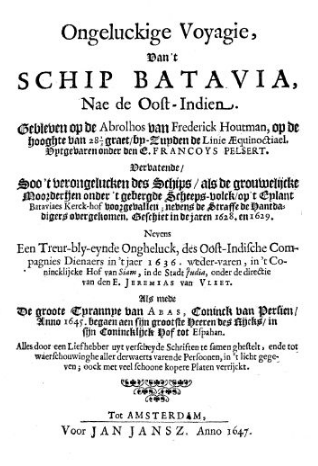
The following list is selective – the fascination with the wreck of Batavia has created an industry – with many other books and articles written, besides the items shown below.
- 1647 – Commander Pelsaert died the year after the event, leaving behind his journal of the events. This journal, together with the pamphlet (The Unlucky Voyage of the Vessel Batavia), published in 1647, made it possible to rediscover the wreck.
- 1647 - Pelsaert, F., & Vliet, J., Ongeluckige voyagie, van 't schip Batavia, nae de Oost-Indien : Gebleven op de Abrolhos van Frederick Houtman ... vytgevaren onder den E. Francoys Pelsert ... : Nevens Een treur-bly-eynde ongheluck, des Oost-Indische Compagnies dienaers in 't jaer 1636. weder-varen ... : Als mede De groote tyrranye van Abas, coninck van Persien, anno 1645 ... / alles door een liefhebber uyt verscheyde schriften te samen ghestelt ... oock met veel schoone kopere platen verrijckt. Tot Amsterdam: Voor Jan Jansz, 118 p., 6 folded leaves of plates, State Library of New South Wales, SAFE/985/ P
- 1897 – Willem Siebenhaar's The Abrolhos tragedy, a translation of Ongeluckige voyagie. Purchased and funded by the guano merchant Florance Broadhurst (see entry on Charles Edward Broadhurst and his family) the translation was subsequently published in the Western Mail. The events also formed the basis of a novel called Marooned on Australia (?1896), by the explorer Ernest Favenc. The events were to feature in Malcolm Uren's work Sailorman's ghosts (1940), and Douglas Stewart's radio play Shipwrecked, in 1947.
- 1963 – Renowned Australian author Henrietta Drake-Brockman's comprehensive, non-fiction account Voyage to Disaster took her ten years to write. She also wrote a fictional story based on the Batavia, The Wicked and the Fair in 1957. It was Drake-Brockman's own research aided by journalist Hugh Edwards (including calculating the differences between Dutch nautical miles from the early 17th century, and English nautical miles) that led divers to the location of the wreck.
- 1966 – Journalist Hugh Edwards published an account of the shipwreck and its rediscovery by Dave Johnson, Max and Graham Cramer, and Greg Allen, under the name Islands of Angry Ghosts: Murder, Mayhem and Mutiny (1966).
- 1973 - The Wreck of the Batavia, an 0-10 Network dramatised documentary produced by Reg Grundy, directed by Bruce Beresford and featuring Michael Craig as the narrator.
- 1970s and 80s – The tale was retold by a number of writers, including Lee Knowles "Batavia incident" in Cool Summers, Hal Colebatch's "Batavia Suite", Mark O'Connor's poem sequence The Batavia and in Nicholas Hasluck's, The Bellarmine Jug.
- 1970s and 1980s - the Western Australia Museum published reports on its excavation and research. These were based on Jeremy Green's archaeological report.[21]
- 1990 – Deborah Lisson's book The Devil's Own, which is aimed at young adults, is also based on the events of Batavia mutiny and massacre. This book won the Western Australian Premier's Award in 1991.
- 1991 – A sub-plot in Gary Crew's novel Strange Objects included two men who sailed Batavia, Wouter Loos, and Jan Pelgrom.
- 1993 – Philippe Godard's book The First and Last Voyage of the Batavia provides a wealth of illustrations, along with details of Batavia's construction, objectives and, of course, the traumatic events on the islands off the West Australian coast. At the end of the book is an English translation of Pelsaert's pamphlet regarding the events on Batavia. The construction of Batavia's second incarnation is also covered, with a number of detailed photographs of the new ship.
- 1995 – Prospero Productions made a 52-minute documentary entitled Batavia Wreck, mutiny and murder, filmed on location.
- 2000 – Arabella Edge's novel The Company is also based on the events of 1629, as is Kathryn Heyman's novel The Accomplice (2003). Whereas Edge tells the story from the perspective of Cornelisz, the chief mutineer, Heyman's The Accomplice is based on the predicament of Judith Bastiaansz, the Predikant's daughter.
- 2000 – The story was also told in a one-hour radio drama, Southland, written by D. J. Britton and broadcast in September 2000 on BBC Radio 4.
- 2001 – The story was retold in the form of an acclaimed opera, simply titled Batavia, composed by Richard Mills and first performed by Opera Australia.
- 2002 – Architect Frits van Dongen, graphic designer Kees Nieuwenhuijzen, and poet Gerrit Kouwenaar built an apartment complex in Amsterdam named Batavia, with a poem referencing the ship imprinted into a wall of the building.[36]
- 2002 – Historian Mike Dash's book, Batavia's Graveyard: The True Story of the Mad Heretic Who Led History's Bloodiest Mutiny, told the whole story in more detail than ever before, making extensive use of Dutch archival sources to explore the early life of Cornelisz, and a number of the Batavia's other passengers and crew.
- 2006 – Writer Simon Leys published The Wreck of the Batavia: A True Story, relating the fate of the Batavia and her crew. The French version of this book, Les Naufragés du Batavia (2003), won the Guizot Prize.
- 2010 – Writer Greta van der Rol published Die a Dry Death, a historical novel based on the true events of the wreck of the Batavia. It makes an argument for the innocence of the captain of the ship, Adriaen Jacobsz. (2010)
- 2010 – The Blue-eyed Aborigine by Rosemary Hayes is a historical novel for young adults portraying a wreck survivor's story.[37]
- 2011 – Batavia by Peter FitzSimons is a creative non-fiction account of the Batavia.
- 2014 – Hell & High Water with music by Matthew Samer and lyrics by Jacqueline Ozorio & Kieran Davey is a musical, produced as a semi-staged production at the Queensland Conservatorium, Brisbane, Australia, having been first conceived in 2007.
- 2016 - Batavia, created by Shabbir Khanbhai and Paul Dickson, is a four-part radio drama adaptation of the story of the Batavia Shipwreck. The production was completed by ambitious drama and music students from the Australian National University, with music by Gen Kinoshita.
- 2016 - Russell Crowe, via his movie production company Fear of God, has purchased the right to produce the story of the Batavia Shipwreck into a film based on the 1966 book, Islands of Angry Ghosts, by Hugh Edwards. If the production is to go ahead it is expected to take several years because the book will first need to be adapted to a screenplay.[38]
6. Woodcuts Published in Unlucky Voyage of Batavia 1647
These five woodcuts are from the 1647 edition of Pelsaert, F., & Vliet, J. Ongeluckige voyagie, van 't schip Batavia, nae de Oost-Indien : Gebleven op de Abrolhos van Frederick Houtman ... vytgevaren onder den E. Francoys Pelsert ... : Nevens Een treur-bly-eynde ongheluck, des Oost-Indische Compagnies dienaers in 't jaer 1636. weder-varen ... : Als mede De groote tyrranye van Abas, coninck van Persien, anno 1645 ... / alles door een liefhebber uyt verscheyde schriften te samen ghestelt ... oock met veel schoone kopere platen verrijckt. Tot Amsterdam: Voor Jan Jansz. The original is held in the State Library of New South Wales SAFE/C 530
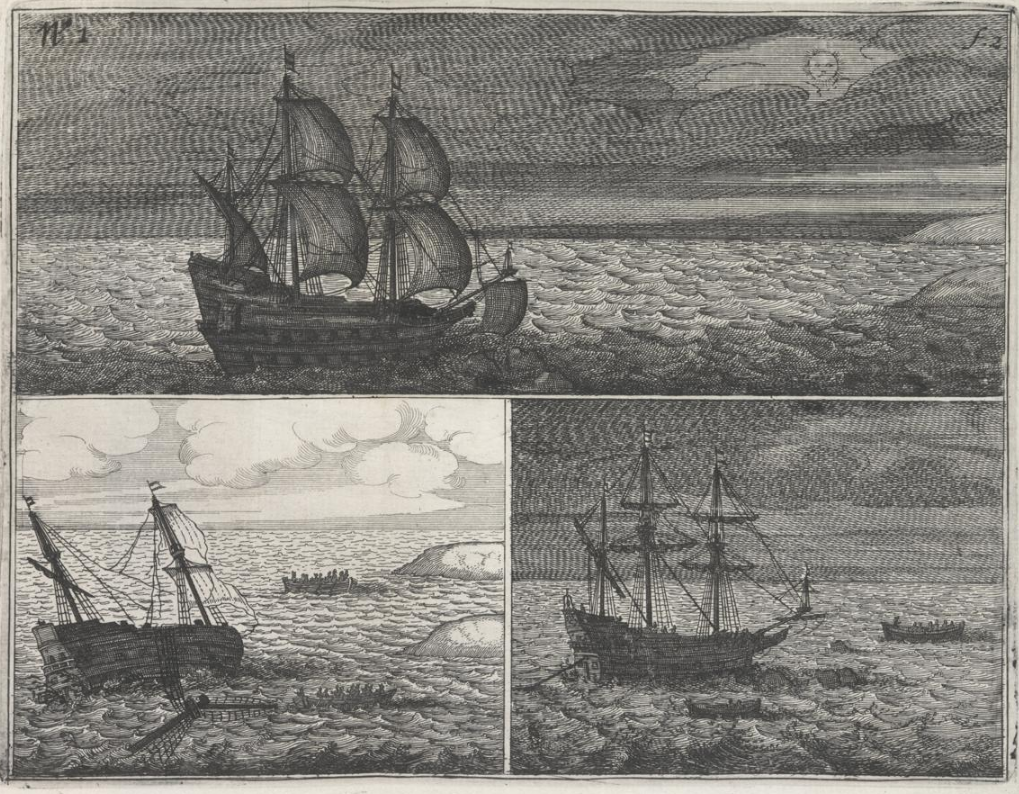
Batavia Pl.1 State Library of New South Wales FL3726277. https://handwiki.org/wiki/index.php?curid=1116829
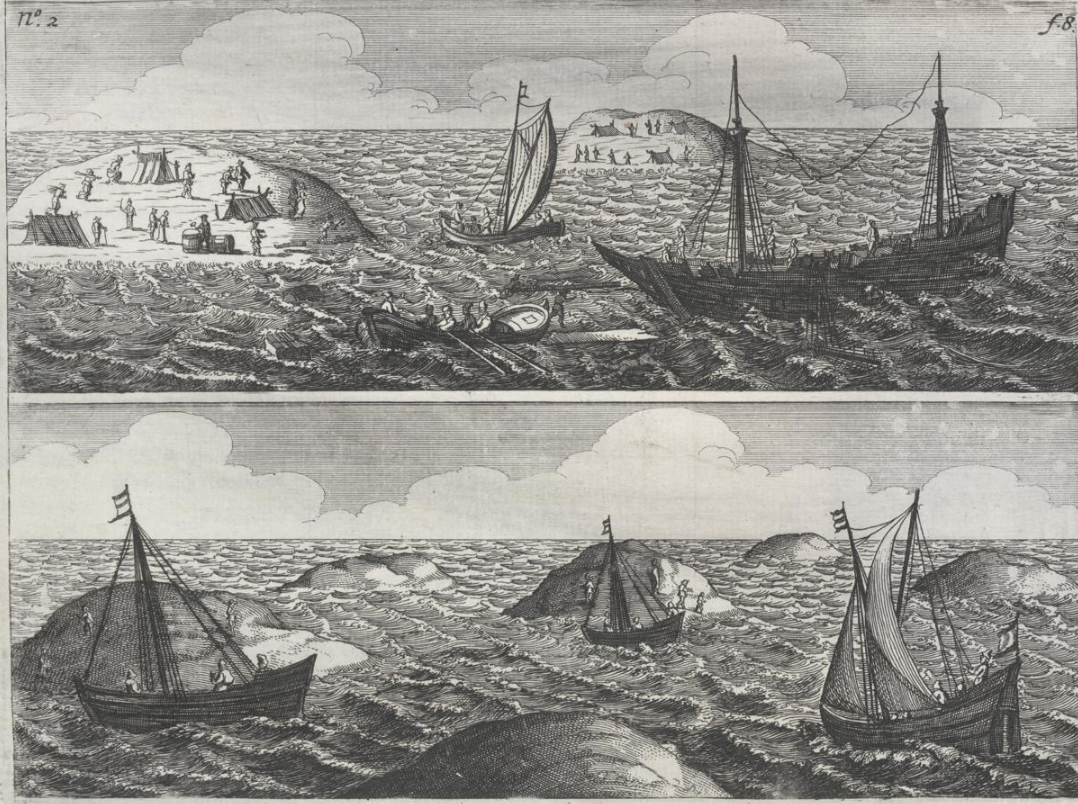
Batavia Pl.2 State Library of New South Wales FL3726280. https://handwiki.org/wiki/index.php?curid=1342077
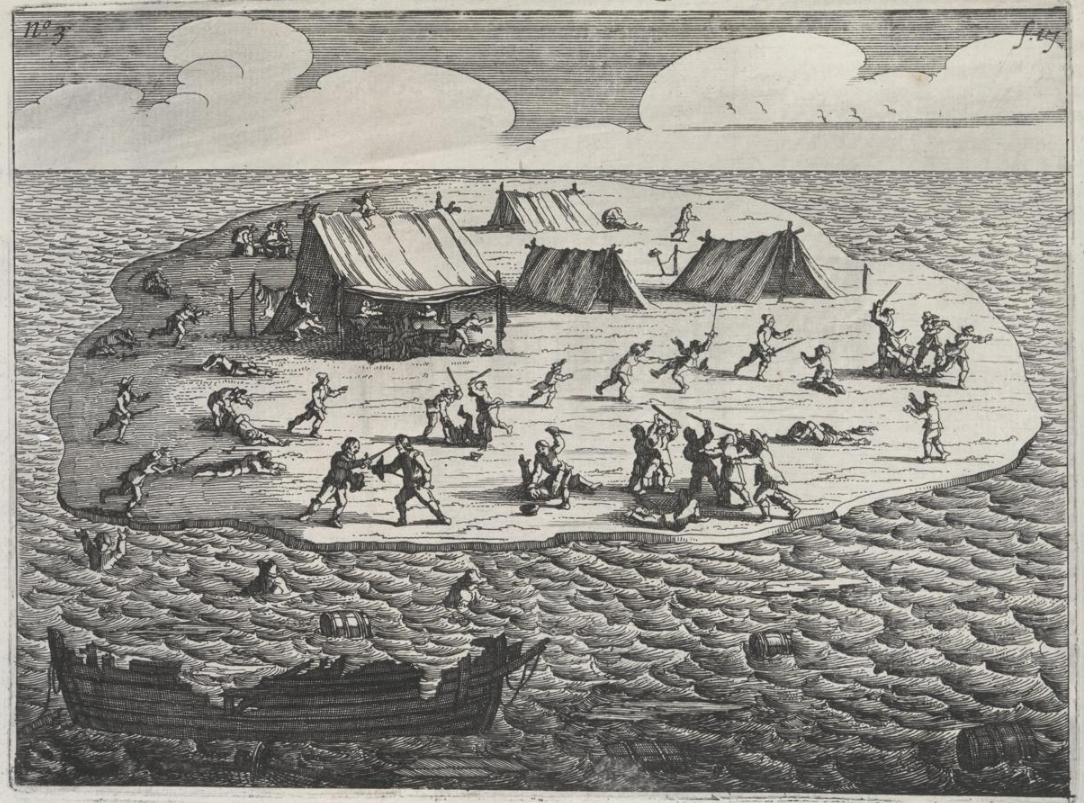
Batavia Pl.3 State Library of New South Wales FL3726282. https://handwiki.org/wiki/index.php?curid=1592821
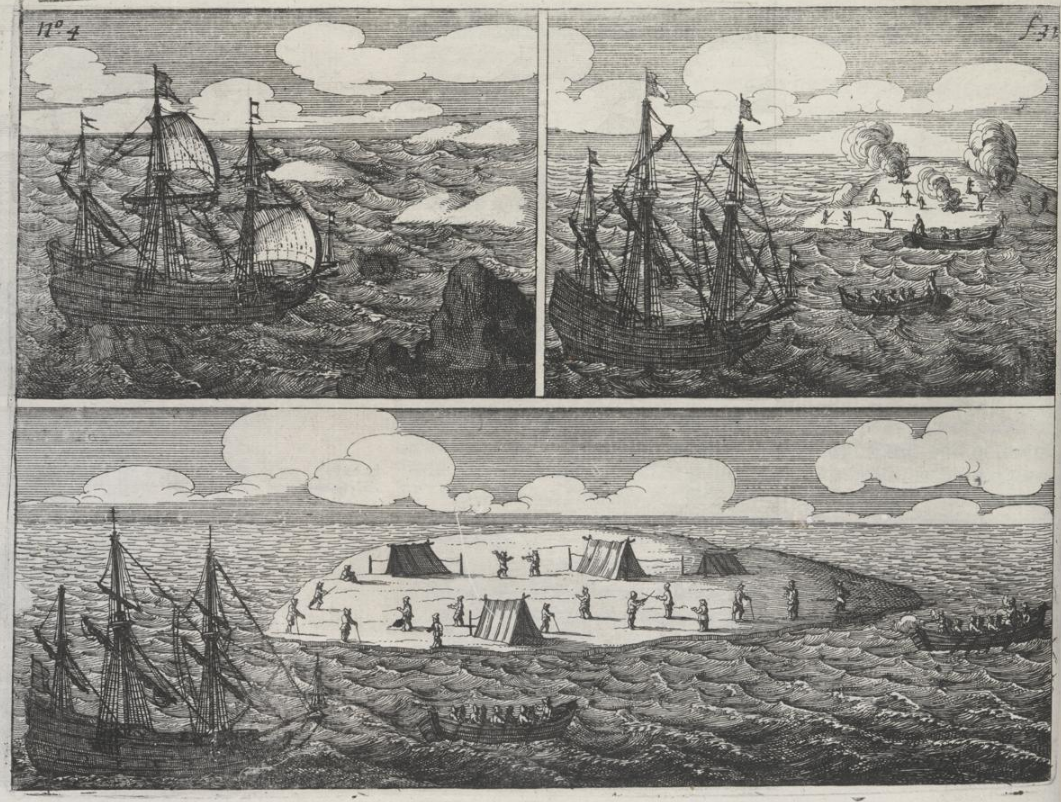
Batavia Pl.4 State Library of New South Wales FL3726284. https://handwiki.org/wiki/index.php?curid=1788636
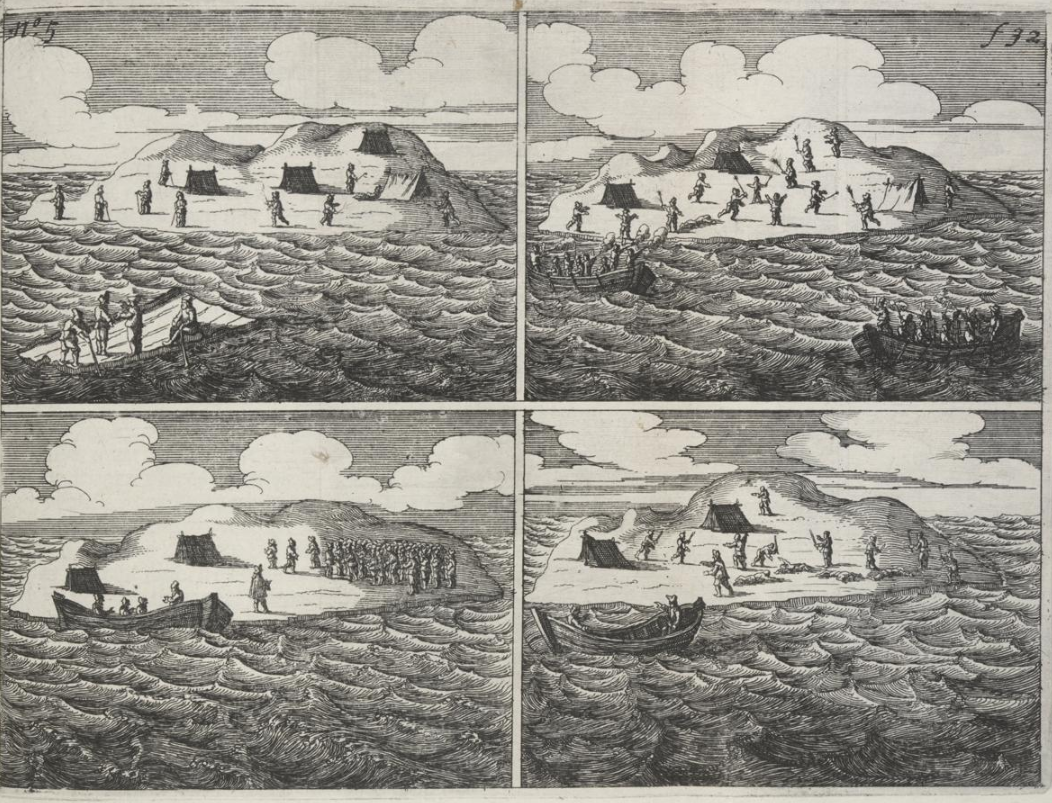
Batavia Pl.5 State Library of New South Wales FL3726286. https://handwiki.org/wiki/index.php?curid=1883901
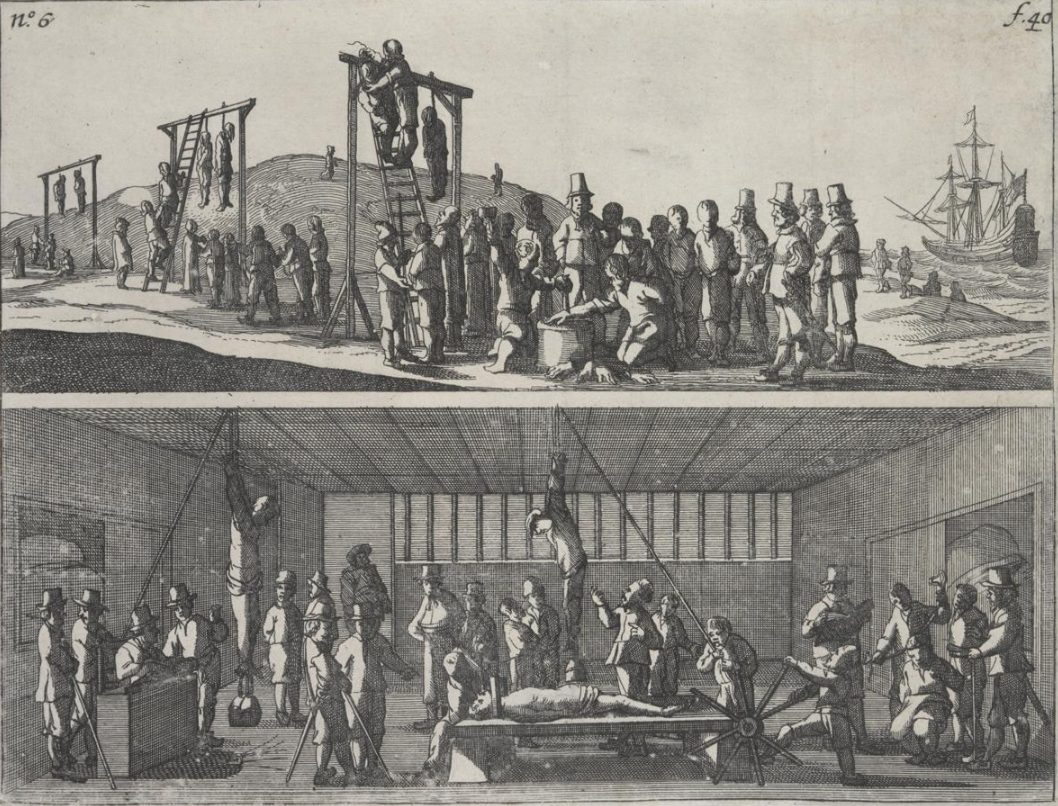
Batavia Pl.6 State Library of New South Wales FL3726288. https://handwiki.org/wiki/index.php?curid=1454683
References
- "Registration Information for: Batavia". The Department of Maritime Archaeology Online Databases. Western Australian Museum. http://www.museum.wa.gov.au/collections/databases/maritime/shipwrecks/shipdetail.asp?ID=1316&Shipname=batavia&Shipdate=&Range1=&Range2=&Shiptype=&Discovered=%&Region=0. Retrieved 11 September 2007.
- Dash, M., (2002), Batavia's Graveyard, New York, p. 57
- BBC History Magazine; Volume 3, No. 7, Pg 70
- Dash, M., (2002), Batavia's Graveyard, New York, p. 87ff
- Dash, M., (2002), Batavia's Graveyard, New York, p. 99
- "VOC ship Batavia". Voc.iinet.net.au. http://www.voc.iinet.net.au/batavia.html. Retrieved 2011-03-27.
- Drake-Brockman, H. (1963), Voyage to Disaster, Angus and Robertson, pp. 300-304, quoting Pelsaert's journals here and in full at pp. 130-131; also Godard, P., 1993, The First and Last Voyage of the Batavia, Perth, p. 156 and note 8; and, Dash, M., (2002), Batavia's Graveyard, New York, p. 150 and footnote.
- Godard, P., (1993), The First and Last Voyage of the Batavia, Perth, pp. 186-7
- Dash, M., (2002), Batavia's Graveyard, New York, pp. 161-2
- Dash, M., (2002), Batavia's Graveyard, New York, pp. 162ffff
- "Batavia's Graveyard". Perth: VOC Historical Society. 2008. http://www.voc.iinet.net.au/batavia.html. Retrieved 31 December 2009.
- Dash, M., (2002), Batavia's Graveyard, New York, p. 140
- Dash, M., (2002), Batavia's Graveyard, New York, p. 138
- Dash, M., (2002), Batavia's Graveyard, New York, p. 122
- Dash, M., (2002), Batavia's Graveyard, New York, pp. 176-9
- Dash, M., (2002), Batavia's Graveyard, New York, pp. 182-3
- Dash, M., (2002), Batavia's Graveyard, New York, pp. 188-190
- Template:Kimberly 1897 p. 10
- McConnell, R. B. (May 1963). "Associations and linkage in human genetics". The American Journal of Medicine 34 (5): 692–701. doi:10.1016/0002-9343(63)90108-6. https://dx.doi.org/10.1016%2F0002-9343%2863%2990108-6
- Dash, M., (2002), Batavia's Graveyard, New York, pp. 241-242
- Green, J.N. (1989). "The AVOC retourschip "Batavia", wrecked Western Australia 1629. An excavation report and catalogue of artefacts.". British Archaeological Reports International Series (489).
- Ghisalberti, E., Godfrey, I.M.*, Kilminster, K., Richards, V.L., Williams, E., 2002, "The analysis of acid affected Batavia timbers. In Proceedings of the 8th ICOM Group on Wet Organic Archaeological Materials Conference, Stockholm, 2001", eds P. Hoffmann, J.A. Spriggs, T. Grant, C. Cook & A. Recht, The International Council of Museums, Committee for Conservation Working Group on Wet Organic Archaeological Materials, pp. 281–307.
- Richards, V.L., 2002, Cosmetic treatment of deacidified Batavia timbers, AICCM Bulletin, vol. 27, Australian Institute for the Conservation of Cultural Material, pp. 12–13.
- Souter, C., 2006, Cultural Tourism and Diver Education. In Maritime Archaeology: Australian Approaches. The Springer Series in Underwater Archaeology. Staniforth, M. & Nash, M. (eds) Springer, New York
- Dash, M., (2002), Batavia’s Graveyard, New York, p. 55
- J.P. Coen, Governor-General of Batavia, Order to Pelsaert, quoted in full in Drake-Brockman, H., (1963), Voyage to Disaster, Angus and Robertston, Appendix 1, pp. 257-258
- ’The Journals of Francisco Pelsaert’ cited in full by Drake-Brockman, H., (1963), Voyage to Disaster, Angus and Robertston, Appendix 1, pp. 218 and 220
- Bedoyere, Guy de la (20 March 2017). "English: The Gemma Constantina, c. CE 312, forming part of the Batavia Treasure, recovered in 1629. Dimensions 180 x 265mm. Now in the Royal Penningkabinet, Leiden. Photographed while on loan to the Western Australia Maritime Museum, Fremantle, in March 2017.". https://commons.wikimedia.org/wiki/File:Batavia_cameo.jpg. Retrieved 19 April 2017.
- Dash, M., (2002), Batavia’s Graveyard, New York, p. 133-134
- Godard, P., (1993), The first and last voyage of the Batavia, Perth, p. 201.
- "PressReader.com - Connecting People Through News". https://www.pressreader.com/australia/fremantle-gazette/20170117/281500750949308. Retrieved 19 April 2017.
- "1700-year-old cameo from Batavia unveiled at WA Maritime Museum - Community News Group". 16 January 2017. http://www.communitynews.com.au/fremantle-gazette/news/1700-year-old-cameo-from-batavia-unveiled-at-wa-maritime-museum/. Retrieved 19 April 2017.
- Godard, P., (1993), The first and last voyage of the Batavia, Perth, pp. 247ff discusses and illustrates the project at the stage it had reached by 1993.
- info@pmwebdesign.nl, © PM Webdesign - Lelystad -. "Bataviawerf - De 7 Provinciën". http://www.bataviawerf.nl/de-7-provincien1.html. Retrieved 19 April 2017.
- "machu fire at batavia shipyard". http://www.machuproject.eu/news/news-31.htm. Retrieved 19 April 2017.
- ArchiNed Nieuws, website related to the "Batavia" apartment building in Amsterdam, accessed 3 December 2007. https://www.classic.archined.nl/news/0011/batavia_tasmania.html
- London: Frances Lincoln. ISBN:978-1-84780-078-7.
- "Russell Crowe buys rights to make grisly WA maritime tale into a movie". 29 March 2016. http://www.abc.net.au/news/2016-03-29/russell-crowe-buys-rights-to-batavia-book-island-of-angry-ghosts/7282468. Retrieved 19 April 2017.
